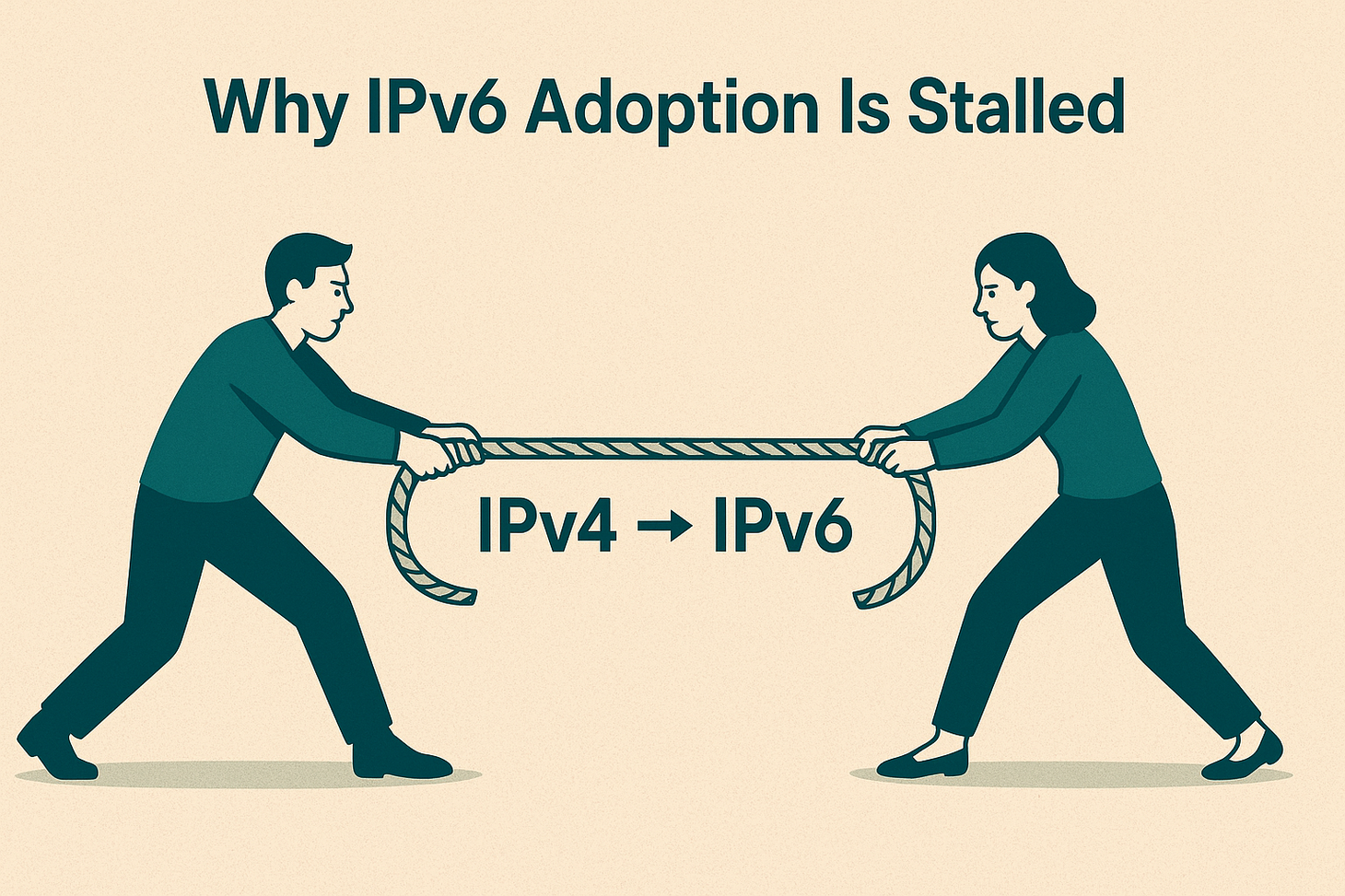IPv6 Adoption Stalls: Behavioral Science Insights and the Shadow of Unused IPv4 Blocks
IPv6 adoption stalls at 43% globally despite decades of effort. Behavioral science shows education fails; focus on habits & access. Calls out unused IPv4 blocks hoarded by ISPs—would reclaiming them reduce IPv6 urgency?

In a thought-provoking blog post from the Internet Society, strategic technology leader Terry Sweetser delves into the persistent stagnation of IPv6 adoption, attributing it not to technical shortcomings but to a misunderstanding of human behavior. Despite three decades of development and over a decade of concerted deployment efforts, global IPv6 usage hovers at around 43%. Sweetser argues that traditional strategies—centered on education and awareness—have largely failed, and he draws on behavioral science to propose a more effective path forward.
The Pitfalls of the ‘Education Fallacy’
Sweetser highlights what behavioral scientists term the “education fallacy”: the misguided belief that simply informing people about a technology’s benefits will drive adoption. For years, the internet community has poured resources into conferences, training sessions, white papers, and case studies emphasizing IPv4 address exhaustion and IPv6’s advantages, such as its vastly larger address space. Yet, as a comprehensive meta-analysis by Dolores Albarracín reveals, interventions targeting knowledge, attitudes, and beliefs have minimal impact on actual behavior change.
Instead, the research outlines a hierarchy of effectiveness for behavior change interventions. At the individual level, factors like knowledge and general skills rank lowest, while habits and behavioral attitudes prove far more influential. On the structural side, legal sanctions and institutional trust are less effective than improving access, providing social support, and offering material incentives. Sweetser contends that IPv6 promotion has fixated on the least impactful elements, explaining the slow progress despite widespread awareness.
Why IPv6 Remains in Limbo
The post outlines several reasons for the impasse:
• Misplaced Focus: Efforts emphasize education over removing barriers, such as simplifying implementation.
• Human Psychology: Network operators, like most people, prefer the path of least resistance. IPv4 with Network Address Translation (NAT) “works well enough,” making IPv6 seem like unnecessary complexity.
• Structural Hurdles: Organizational inertia, vendor limitations, and IPv4-centric procedures hinder progress.
Sweetser contrasts this with successful transitions, like HTTPS adoption, which surged due to structural changes: browsers defaulting to HTTPS, free certificates from Let’s Encrypt, search engine incentives, and “not secure” warnings for HTTP sites. Similarly, BGP security improved through easier operations, feedback systems, and peer pressure—making the desired behavior the “natural, obvious, easy choice.”
A Behavioral Framework for Change
To accelerate IPv6 and other infrastructure shifts, Sweetser proposes focusing on high-impact factors:
1. Habits: Integrate IPv6 into routine tools and processes.
2. Access Improvements: Develop automated deployment tools and defaults.
3. Social Support and Norms: Foster communities and peer examples.
4. Incentives: Align economics and operations to favor IPv6.
This systems-thinking approach extends beyond IPv6 to areas like DNS over HTTPS/TLS, post-quantum cryptography, and internet governance participation.
The Elephant in the Room: Unused IPv4 Blocks and Large ISPs
While Sweetser’s behavioral analysis is compelling, it overlooks a critical inefficiency in the IPv4 ecosystem: the vast swaths of allocated addresses sitting idle in the hands of large internet service providers (ISPs) and organizations. Research indicates that significant portions of IPv4 space remain underutilized, often hoarded by legacy holders, as detailed in analyses from Wikipedia and LARUS. For instance, studies estimate that over 250 million IPv4 addresses are unused, with big players controlling large blocks that could be reclaimed or redistributed, according to reports from IPXO and RSinc. Legacy allocations, including entire /8 blocks (over 16 million addresses each) held by governments and corporations, exacerbate this—such as unused inventories from enterprises that have partially transitioned to IPv6, as explored in IEEE-USA’s white paper.
This hoarding allows ISPs to transfer or reclaim addresses internally, sustaining growth without IPv6, as noted in discussions on IPv4 depletion impacts. It raises a pointed question: Would IPv6 be as urgently necessary if these blocks weren’t wasted? If efficient reclamation and redistribution occurred—potentially freeing up millions of addresses—the pressure from IPv4 exhaustion might ease, delaying or even diminishing the need for a full transition, per insights from APNIC and an empirical analysis from TU Berlin. While no research definitively answers this counterfactual, evidence suggests that underutilization prolongs IPv4’s viability, slowing IPv6 incentives in regions with lingering demand, as highlighted by Gcore and APNIC Labs.
Moving Toward a Modern Internet
Sweetser concludes that the internet community must shift from rational appeals to designs that account for real human behavior—efficiency-seeking and habit-driven. For IPv6, this means vendor defaults, operational ease, community support, and economic alignment. But addressing IPv4 waste could complement these efforts, ensuring resources aren’t squandered while we build a more resilient infrastructure.
As Sweetser notes, after 30 years of education-heavy tactics, it’s time to embrace behavioral science—and perhaps a harder look at resource management—to drive meaningful change.
Inspired by the Internet Society’s Pulse blog. For the full post, visit here.
Jonathan Ford Newsletter
Join the newsletter to receive the latest updates in your inbox.
